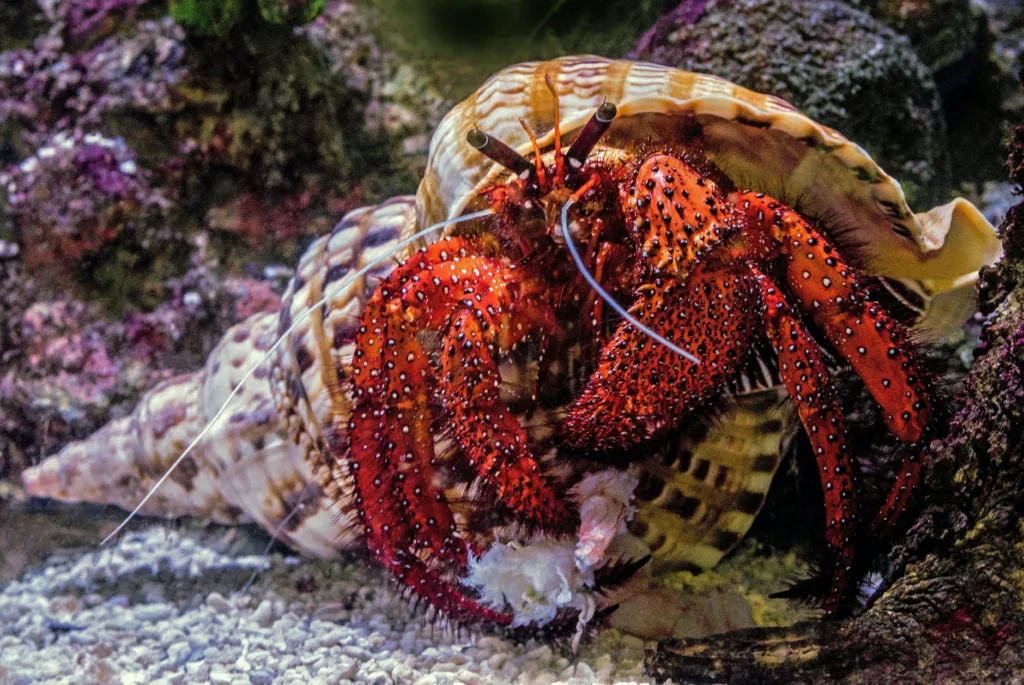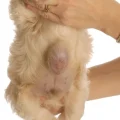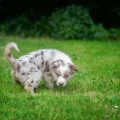Hermit crabs, those curious creatures with their unique ability to change shells, undergo a remarkable process known as molting. During this time, they shed their old exoskeleton and grow a new one, allowing them to continue their growth. The molting process is a natural and necessary part of a hermit crab’s life cycle, and understanding it can help you provide the best care for your pet.
The duration of the molting process can vary depending on the size of the crab. As a general rule, larger crabs take longer to complete the molt. On average, it takes about four to eight weeks for an average-sized crab to complete the entire process. During this time, the crab may stay completely buried in the sand, seeking solitude and protection.
When your hermit crab is molting, it is crucial to provide the right conditions and give them the space they need. The most important thing you can do is to leave your crab alone. Avoid the temptation to take a peek at them, as this can cause stress or even damage their delicate new exoskeleton.
Maintaining a moist environment is essential during molting. Mist the tank daily to ensure the humidity levels are adequate. Additionally, make sure to provide fresh food and water regularly, as your crab will need nourishment after the molt.
There are several signs that indicate a hermit crab is preparing to molt. One noticeable change is the expansion and increased definition of their gel limb. The crab’s legs and claws may appear droopy or weak, and their eye stalks may face away from each other in a “V” shape, rather than being parallel.
During the molting process, a crab’s exoskeleton becomes cloudy, white-ish, and dull, similar to a human’s cataract. These changes in appearance are normal and indicate that the crab is entering the molting stage.
Hermit crabs have an instinctual need to isolate themselves during the molting process. They often seek refuge by burrowing under the sand, mimicking their natural environment. Alternatively, they may choose to hide under a piece of wood or other structures in their habitat.
Creating a suitable environment with ample sand for burrowing is essential to meet your crab’s needs during molting. This allows them to feel secure and safe as they shed their old exoskeleton and grow a new one.
Hermit crab molting is a fascinating and necessary process for their growth and development. By understanding the duration, signs, and importance of isolation during molting, you can provide the best care for your pet crab. Remember to provide a moist environment, avoid disturbing your crab during this time, and allow them the solitude they need to complete the molting process successfully. By doing so, you will ensure the health and well-being of your hermit crab and witness the wonder of nature’s molting cycle.

How Long Does It Take For A Hermit Crab To Molt?
The duration of the molting process in hermit crabs can vary depending on the size of the crab. Generally, larger crabs take longer to complete the molt. On average, it can take about four to eight weeks for a hermit crab to go through the entire molting process.
During this time, the crab may choose to bury itself completely in the sand. This behavior is normal and helps to protect the crab during the vulnerable molting period. While buried, the crab sheds its old exoskeleton and grows a new one.
Here is a breakdown of the molting process in hermit crabs:
1. Pre-molt: Before the actual molt begins, the crab will exhibit certain signs indicating that it is preparing to molt. These signs may include reduced activity, loss of appetite, and increased hiding behavior.
2. Shedding the exoskeleton: Once the pre-molt stage is complete, the crab will shed its old exoskeleton. This process is known as ecdysis. The crab will emerge from its old exoskeleton, leaving behind a soft, vulnerable body.
3. Hardening of the new exoskeleton: After shedding the old exoskeleton, the crab’s body will begin to harden as the new exoskeleton develops. During this time, the crab may remain hidden and inactive to protect itself.
4. Recovery and growth: As the new exoskeleton hardens, the crab will start to regain its strength and activity levels. It will also begin to grow, allowing it to take on a larger shell if necessary.
It is important to provide a suitable environment for a molting hermit crab, including a deep substrate for burrowing and maintaining proper humidity levels. Disturbing a molting crab can be highly stressful and detrimental to its health, so it is best to avoid handling or moving the crab during this time.
The molting process in hermit crabs typically takes about four to eight weeks, with larger crabs taking longer. During this time, the crab stays buried in the sand, sheds its old exoskeleton, and develops a new one. Providing a stress-free environment is crucial for the crab’s well-being during this vulnerable period.
What Do You Do When Your Hermit Crab Is Molting?
When your hermit crab is molting, it is important to follow certain steps to ensure its well-being and support the molting process. Here’s a detailed guide on what to do when your hermit crab is molting:
1. Leave them alone: The most crucial step is to give your hermit crab space and privacy during this time. Avoid disturbing or handling them as it can cause stress and potentially damage their delicate exoskeleton.
2. Maintain humidity: Mist the tank daily to maintain a humid environment, which is essential for successful molting. Use a spray bottle filled with dechlorinated water to lightly mist the substrate, but be careful not to oversaturate it.
3. Provide fresh food and water: Although your hermit crab won’t eat during molting, it’s important to keep their food and water dishes clean and filled. Ensure the water is treated with a dechlorinator to remove harmful chemicals.
4. Observe from a distance: While it’s tempting to check on your molting hermit crab, it’s best to resist the urge. Observe them from a distance to ensure they are still alive and moving occasionally. Look for small movements or slight shifts in their position, which indicate they are fine.
5. Maintain tank conditions: Keep the temperature and humidity levels stable in the tank, as fluctuations can be detrimental to molting hermit crabs. Use a thermometer and hygrometer to monitor the temperature and humidity, adjusting as needed.
6. Avoid handling the exoskeleton: Once your hermit crab completes molting, it will leave behind its old exoskeleton. It’s important not to handle or remove it immediately, as it serves as protection until the new exoskeleton hardens.
7. Wait for the hardening process: After molting, your hermit crab’s new exoskeleton will be soft and vulnerable. Wait for it to harden completely before handling or disturbing your crab. This process usually takes a few days to a week.
Remember, each hermit crab may have slightly different molting behaviors and durations. If you notice any signs of distress, such as prolonged immobility or unusual discoloration, consult a veterinarian who specializes in exotics or hermit crabs for guidance.
How Do I Know When My Hermit Crab Is Molting?
To determine when your hermit crab is molting, there are several signs you can look out for:
1. Shell change: Before molting, hermit crabs often seek out a larger shell to accommodate their growing body. If you notice your crab repeatedly inspecting and trying on different shells, it may be preparing to molt.
2. Inactivity: Molting is a vulnerable process for hermit crabs, so they tend to become less active and hide away in their shells or burrows. If your crab retreats and remains inactive for an extended period, it could be a sign of molting.
3. Loss of appetite: During molting, hermit crabs usually lose their appetite and stop eating. If you notice a sudden decrease in food consumption or your crab refuses to eat altogether, it may indicate molting.
4. Dull and cloudy appearance: As molting time approaches, the crab’s exoskeleton may appear cloudy, whitish, and dull. This change in appearance is similar to a human’s cataract and can be a clear indication of molting.
5. Limb expansion: In preparation for molting, a hermit crab’s gel limb (the limb that connects the body to the shell) will expand and become more defined. This can make the legs and claws appear droopy or weak.
6. Eye stalk position: Normally, a hermit crab’s eye stalks are parallel to each other. However, before molting, they may face away from each other in a “V” shape.
Remember that molting is a crucial process for hermit crabs, and they require a quiet and undisturbed environment during this time. Avoid handling or disturbing your crab while it is molting to ensure a successful molt.
Signs that your hermit crab is molting include shell changing, inactivity, loss of appetite, dull appearance, limb expansion, and eye stalk position. Monitoring these indicators can help you determine when your hermit crab is going through this natural process.
Should You Isolate A Molting Hermit Crab?
It is recommended to isolate a molting hermit crab. During the molting process, hermit crabs need to create a secluded and safe environment for themselves. This isolation allows them to molt successfully without any disturbances or potential harm from other tank mates.
To create the ideal conditions for molting, hermit crabs often prefer to bury themselves under the sand or sometimes seek shelter under a piece of wood. It is important to provide them with a moist environment, as this mimics their natural habitat and helps facilitate the molting process.
Isolating a molting hermit crab serves several purposes. Firstly, it prevents other tank mates from accidentally disturbing the molting crab. Other crabs or tank mates may unknowingly damage or injure the molting crab, which can be detrimental to its health and survival.
Secondly, isolation also allows the hermit crab to molt without expending unnecessary energy on social interactions or territorial disputes. Molting is a physically demanding process, and hermit crabs need to conserve energy during this time. By isolating them, they can focus solely on the molting process and allocate their energy toward the growth and regeneration of their exoskeleton.
Isolating a molting hermit crab is crucial for its well-being and successful molting. Providing a secluded and moist environment enables them to molt undisturbed, ensuring a smooth and healthy molting process.
Conclusion
Hermit crab molting is a natural and important process for these fascinating creatures. The duration of the molting process can vary, with larger crabs typically taking longer to complete the molt. On average, it can take about four to eight weeks for a crab to go through the entire molting process. During this time, it is crucial to leave the crab undisturbed and avoid any unnecessary stress or damage to its new exoskeleton.
One of the key signs that a hermit crab is molting is the expansion and definition of its gel limb. The legs and claws may appear droopy or weak, and the eye stalks may face away from each other in a “V” shape rather than being parallel. The crab’s overall appearance may also become cloudy, whitish, and dull, similar to a human’s cataract.
To provide the ideal conditions for molting, it is recommended to maintain a moist environment in the crab’s tank. This can be achieved by misting the tank daily and ensuring a proper balance of food and water. Additionally, providing a substrate like sand allows the crab to bury itself during the molting process, mimicking its natural habitat.
Understanding and respecting the molting process of hermit crabs is essential for their well-being. By allowing them the necessary time and space to molt, we can ensure their successful growth and development.












